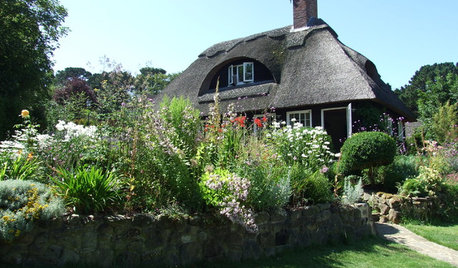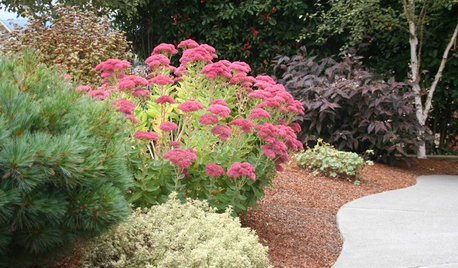Any Pear or Apple varieties with an aroma like Quince?
parker25mv
8 years ago
Featured Answer
Sort by:Oldest
Comments (31)
parker25mv
8 years agolast modified: 8 years agoparker25mv
8 years agoRelated Discussions
Could a apple taste like a pear? What's my Name w/p
Comments (8)You know...I goggled, "apples that taste like pears" and nothing came up. Apples trees came up but none gave the discription that they taste like pears, So I thought I was going mad...thanks for that info. Do you think any of these apples look like the regular apples of trees say gala, Jonagold? md...See MoreAnyone growing asian pears or apples in georgia with any success?
Comments (3)Thanks for the follow up. That's good to hear. I have read where they taste different by different locations. I have never tasted a home grown asian pear but the store bought ones are amazing. Have you ever had any problems with fire blight or any other diease?...See MoreNo fruit yet on 5-year old apple and pear trees...hmmm
Comments (6)The fruit trees should produce at least a few fruits by the fourth year. That's really when the trees have become semi-mature. This could mean you will have to wait for summer next year (because the first year does not count if it was not planted in the spring). If you still do not see any fruit appear on any of your fruit trees by next year, something is likely wrong. Maybe you are giving your trees too much fertilizer? That can sometimes delay fruiting. Also where is your location? If you are in climate zones 8-10, the trees might not be getting enough chill (and if that is the case there are certain things that can be done to help counteract this). Or your area might have experienced late chill this year, which prevented fruit from forming. Are the crabapples sending out blossoms at the same time as the apples? Have you seen any bees visiting the blossoms? How close are the pear trees to each other? If they are more than 20-30ft apart, that may be making pollination difficult in the early years....See MoreAnyone addicted to fruit trees?
Comments (76)I bought a house with a backyard that is a former 60 years old citrus grove, one of the reasons I bought this specific house. The north part of the grove was Washington Navels and the south part was Valencia. The original home owners planted Minneola Tangelo and a Pink Blush Grapefruit, now 40 years old. Originally I was working on restoring it to look like the grove it once was but now I"m adding enough that it will look different as I have too many trees to fit. It originally had about 18 full size 20' diameter trees but I'm adding a few different varieties and have 58 original trees plus trees planted plus trees in pots to plant. WAY too many so one 100' side is now going to be Espaliered citrus along the wall. Still have 6-7 in pots in the front walk. Another 5 different Avocados. Just grapefruit: Pink Blush, Duncan, Oro Blanco, Melogold, Rio Red, Valentine, Cocktail, Chandler Pomello. Of course, this many trees in drought stricken SoCal is a problem so I now am working on 1920 gallon rain water recovery and grey water recovery system. In the meantime, I have 8 42 gallon trash cans in the inside roof corners that get filled each rainstorm so I water with almost all rainwater recovery. I'm not addicted, really!...See Moreparker25mv
8 years agolast modified: 8 years agoThe Logician LLC
8 years agoparker25mv
8 years agolast modified: 8 years agoparker25mv
8 years agolast modified: 8 years agoparker25mv
8 years agolast modified: 8 years agoparker25mv
8 years agolast modified: 8 years agoxentar_gw
8 years agoparker25mv
8 years agolast modified: 8 years agoThe Logician LLC
8 years agogonebananas_gw
8 years agoxentar_gw
8 years agolast modified: 8 years agopip313
8 years agoThe Logician LLC
8 years agoparker25mv
8 years agolast modified: 8 years agoparker25mv
8 years agolast modified: 8 years agoparker25mv
8 years agolast modified: 8 years agoarmyofda12mnkeys
8 years agolast modified: 8 years agoparker25mv
8 years agolast modified: 8 years agoparker25mv
8 years agolast modified: 8 years agoparker25mv
8 years agolast modified: 8 years agoparker25mv
8 years agolast modified: 8 years agoparker25mv
8 years agolast modified: 8 years agoparker25mv
8 years agolast modified: 8 years agoparker25mv
8 years agolast modified: 8 years agoparker25mv
7 years agoparker25mv
7 years agoTeresa V
3 years agosaveukraine
6 months ago
Related Stories

EDIBLE GARDENSWhy Grow Quince? For Beauty, Fragrance and Old-Time Flavor
Delightfully perfumed fruit and lovely spring blossoms make this apple and pear cousin worth a spot in the garden
Full Story
EDIBLE GARDENSHow to Grow Your Own European and Asian Pears
Try these trees for their good looks, delicious fruit and wide range of sizes — plus you can espalier them
Full Story
EDIBLE GARDENSHow to Add an Apple Tree to Your Edible Garden
Readily available, beautiful and fragrant, apple trees offer four-season interest along with crisp, juicy fruit
Full Story
GARDENING GUIDES6 Captivating Roses for an Alluringly Fragrant Garden
Perfume your garden with aromas from richly spicy to lightly sweet, without sacrificing an inch of color
Full Story
GARDENING AND LANDSCAPINGCrazy for Fruit Trees
Whether a single citrus or a mini apple orchard, even the smallest landscape space can bear deliriously delicious fruit
Full Story
FRUIT TREESHow to Grow Your Own Juicy Plums
Easier than other stone fruits and with a variety of colors to choose from, plums are a versatile garden addition
Full Story
LANDSCAPE DESIGNHow to Create a Cottage-Style Garden
If you like an abundance of plants — and visits from birds, bees and butterflies — this may be the style of yard for you
Full Story
DECORATING GUIDESHouzz Call: Show Us Your Christmas Tablescape
Do you bring out the good silver, candles, berries and greens for your holiday table? If so, we'd like to see it
Full Story
EDIBLE GARDENSHow to Grow 10 Favorite Fruit Trees at Home
Plant a mini orchard in fall, winter or early spring to enjoy fresh-off-the-tree fruit the following year
Full Story
GARDENING GUIDESPacific Northwest Gardener's August Checklist
Deadheading perennials, cutting raspberry canes and preparing for the onion harvest keeps Northwest gardeners busy in August
Full Story







armyofda12mnkeys